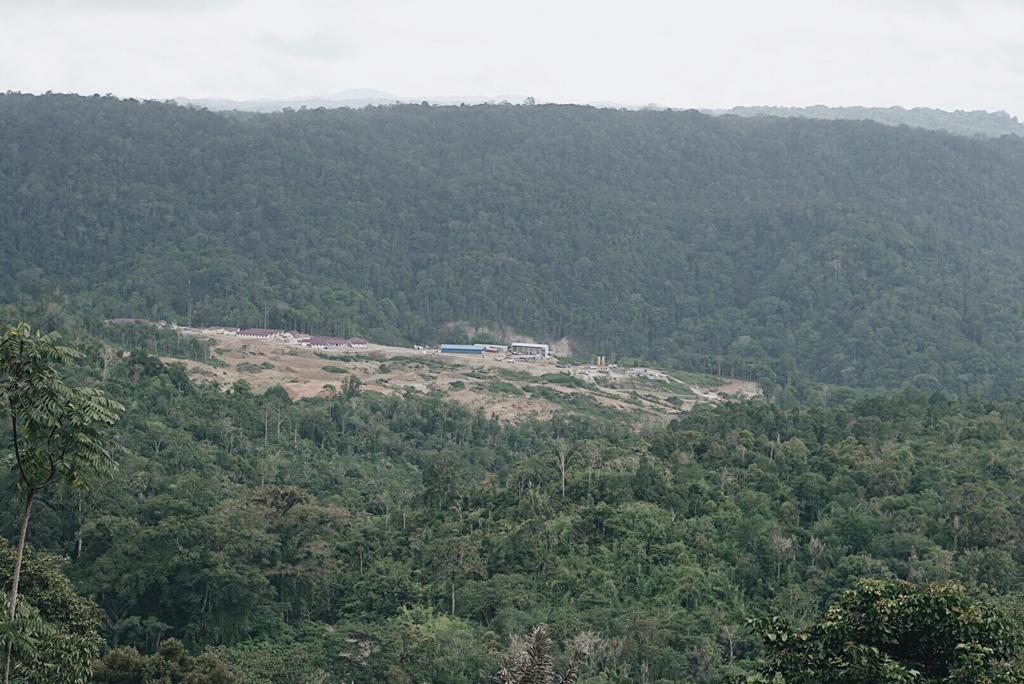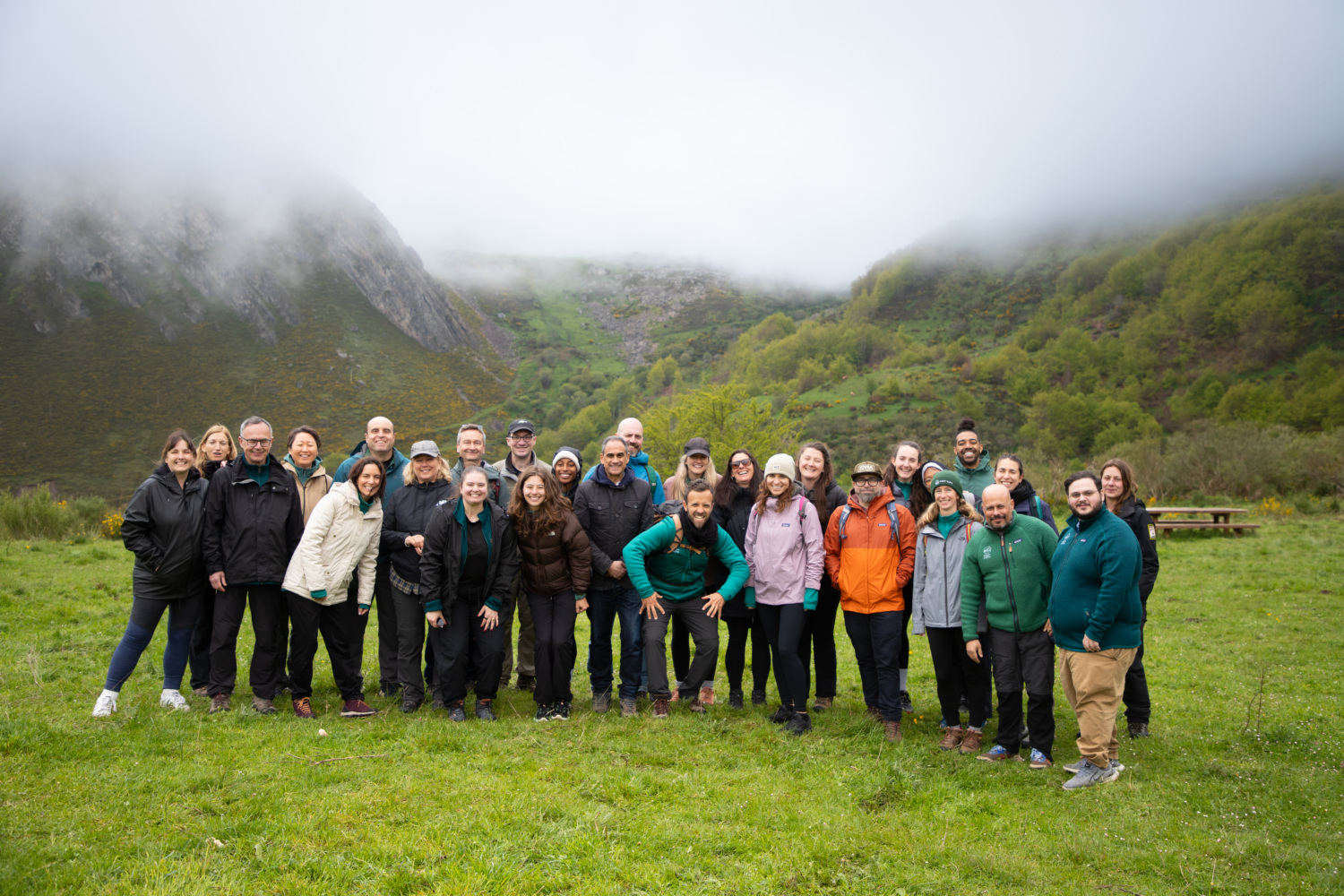
New Analysis: Batang Toru Hydroelectric Plant ‘Unnecessary’
Will oversupply power and threaten first great ape extinction in recorded history
JAKARTA — A report, available in English, Bahasa and Chinese, by a leading international consultancy warns that the proposed USD 1.6 billion Batang Toru hydroelectric project in South Tapanuli Regency, North Sumatra, is not only entirely unnecessary for meeting Indonesia or North Sumatra’s future energy needs, but is also a critical threat to the local ecosystem and the critically endangered Tapanuli orangutan. The report finds that the dam’s backers have mischaracterized, exaggerated, or just manufactured much of the rationale for the dam.
The report, entitled “Analysis of Electricity Demand in North Sumatra Province and the Planned Batang Toru Hydroelectric Power Plant’s Impacts,” and authored by Dr. David Brown finds that:
- North Sumatra is almost fully electrified, and rolling blackouts are largely a thing of the past. The province has a power surplus. In view of the addition of gas-fired peak power capacity added in 2017 and ongoing improvements in grid infrastructure, the building of Batang Toru would not materially improve access to nor the regularity of power supply in the province.
- Batang Toru will not replace “diesel power plants rented from overseas,” as there are no such plants in North Sumatra. There is a rented floating gas-fired power plant. But the climate change and balance of payments implications of burning gas are quite different from those of burning diesel.
- It is claimed that the commissioning of Batang Toru would result in reduction of a very modest .0016 to .0022 gigatonnes of annual CO2 emissions per year. But even these are overestimates. Reductions made possible by Batang Toru are more likely to be on the order of .0007 to .001 gigatonnes of CO2 annually. Regardless, potential emissions reductions represent on the order of just one tenth of one percent of Indonesia’s annual emissions but come with enormous environmental cost.
- In spite of the efforts of the owners and proponents of Batang Toru to tout the proposed dam as a provider of peak power, only half of the plant’s output would be peak power. The remainder is baseload power.
- The need for Batang Toru’s proposed peak power capacity is already diminishing, due to the existence of a 240 MW floating gas plant, and the likely future construction of 800 MW in new gas fired peak power which will come on line in 2022 (200 MW), 2024 (300 MW) and 2028 (300 MW). Like Batang Toru, these gas plants produce peak power during the night and could also produce power during the day, if needed.
- As for Batang Toru’s proposed contribution to the province’s baseload power, this is already being rendered unnecessary by the 330 MW Sarulla geothermal power plant which came on line in 2017 and 2018, and could be rendered even more superfluous by a 300 MW “expansion” in capacity at Sarulla starting in 2022, as well as a the “high possibility” of 240 MW in new geothermal power at Sorik Marapi. Another excellent option for the production of power during the day would be solar power; the report recommends that the Directorate General of Electricity and PLN should give greater consideration to solar power.
- Batang Toru will not put diesel power plants out of business, and thus will not alleviate the negative balance of payment impact to the nation caused by the import of diesel. However, the high capital costs of building Batang Toru will lead to the outflow of dollars from Indonesia and into the bank accounts of the Chinese contractor that will build the plant, as well as the Chinese holding company that owns the majority of the plant, all to the detriment of Indonesia’s balance of payments.
- Sinohydro, the contractor that is building Batang Toru has a global track record of fraud, non- standard practices, and corruption on three continents, all of which suggests that Batang Toru has significant construction and operations risks.
- The Directorate General of Energy’s overly robust projections of power demand have led to an overbuilding of power plants in North Sumatra. This may be a blessing in disguise, as it could mean that there are many excellent substitutes available for the peak power (Point 5 above) and baseload power (Point 6 above) that Batang Toru aims to produce without threatening one of Indonesia’s world famous natural treasure, the endangered Tapanuli orangutan.
Advocates for protecting the Tapanuli orangutan have seized on the report’s findings and called for a halt to the project.
The new report was produced by Dr. David W. Brown, a principal at Brown Brothers Energy and Environment (B2E2). Dr. Brown, who has 20 years of experience in advising public and private sector clients on the governance and environmental challenges of Indonesia’s natural resource sectors, will appear in Jakarta on January 22 to present the report and discuss its findings with the local and international press. He will be joined by Mimi Surbakti from Srikandi Lestari Sumatera Utara who focuses on promoting the development of clean energy, Tri Mumpuni, a microhydro expert, as well as by Iqbal Damanik from Auriga.
Background
The planned USD 1.6 billion North Sumatra Hydro Energy (NSHE) hydroelectric dam was first announced in 2012 and is scheduled for completion by 2022.
However, many traditional infrastructure lenders have refused to fund the project because of the disproportionate threat to orangutans and lack of benefits. Multilateral development banks like the World Bank Group have pulled out of the project, as have other private investment banks like Goldman Sachs. The Asian Infrastructure Investment Bank has reportedly declined to finance the project. And while state-owned Chinese contractor Sinohydro has signed on to handle the project construction, the Bank of China recently communicated that it too has pulled its planned financing for the hydroelectric dam project.
The project will include the construction of a powerhouse, a substation, headrace and tailrace tunnels, a reservoir, spillway and related infrastructure, the installation of turbines, generators and transformers, and the laying of transmission lines.
Environmental Impact
Since it was first announced in 2012, the project has been the target of criticism, especially from environmentalists, who have said the dam would pose a threat to the area’s forest ecosystem and a potential risk to the lives and livelihoods of thousands of downstream local residents who rely on the river’s ecosystem for their survival for fisheries, agriculture, transport, and daily water needs. A fact- finding mission earlier this year found considerable apprehension about the project among local residents, many of whom have joined the opposition from international environmentalists in calling for the project to be halted.
The opposition intensified when it was discovered that the Batang Toru forest area, which is the project site, was also home to a newly discovered species of orangutan (Pongo tapanuliensis), which lives exclusively in that forest. Environmentalists and wildlife experts say the construction of the dam on the Batang Toru River would permanently fracture the orangutans’ habitat, decreasing connectivity between populations and contributing to the extinction of this rare species, which currently hosts a population fewer than 800 apes – and is the world’s most endangered great ape.
In addition to providing the Tapanuli orangutan’s only home, the Batang Toru ecosystem is biologically diverse with over 310 species of bird recorded, 80 species of reptiles, 64 species of frogs and toads, and more than 1,000 tree species.1 The area is also home to six other endangered and vulnerable primate species including siamangs (Symphalangus syndactylus) and agile gibbons (Hylobates agilis) in addition to the Tapanuli orangutan, making it one of the few areas in the world where three ape species coexist. The Batang Toru ecosystem is also home to other rare and threatened animal species including the Sumatran tiger (Panthera tigris sumatrae), the sun bear (Helarctos malayanus), the tapir (Tapirus indicus) and birds such as the Great Argus pheasant (Argusianus argus).
New Analysis
In light of the continued controversy, the Brown report sought to weigh the actual necessity of building the NSHE project against the harm it could cause.
“From an engineering standpoint, Batang Toru appears well-designed,” the report says. “However, the project’s infrastructure will destroy or isolate three out of five habitat blocks of a newly-discovered species, the Tapanuli orangutan, one of only seven species of Great Ape on Earth (or one of eight if humans are counted),” it warns.
The report identifies specific threats to the Tapanuli orangutan, noting that the rare species specifically “lives in the lowlands where the infrastructure associated with Batang Toru is to be built, and in three areas of adjacent highlands.”
The Tapanuli is especially vulnerable due to its fragmented population, and the report finds that the project would impact at least three of the groups. “Even proponents and opponents of Batang Toru appear to agree,” the report says, “that the infrastructure of the dam will lead to the displacement, and in some cases, death of the orangutans living in the third zone, and the permanent genetic isolation of those living in the fourth and fifth zones, more than 70 individuals.”
Conclusion
The new analysis is clear in its findings: “There may have been a rationale for the Batang Toru hydroelectric dam when it was proposed in 2012, before the identification of the Tapanuli orangutan, and in a very different energy situation. But there’s no need for it in 2020.”
“This research shows that Batang Toru hydroelectric power plant is not a necessary infrastructure for North Sumatra. Going forward, we have to prove who gains the most benefits from this forced construction,” Iqbal Damanik from Auriga said.
“I am fond of sustainable, environmentally friendly, and pollutant-free power plants. Microhydro, minihydro, and run off type are the answers since there is a larger number of rivers in Indonesia that needs to be protected with proper catchment area in order to maintain the water debit to flow as planned,” said Tri Mumpuni.
Mimi Surbakti also stated, “The fulfillment of electrical energy demand should not sacrifice the environment, especially if it threatens the extinction of a protected species. The government should be able to give ecological justice to save the livelihoods of people from the sources of nature’s degradation and exploitation.”
The report’s conclusion says, “Proponents of Batang Toru argue that driving the Tapanuli orangutan toward extinction is a price worth paying because the project will help to meet the current and future power needs of North Sumatra province. These defenders raise what they perceive as the climate change mitigation, peak power, and balance of payments benefits of Batang Toru. All of these arguments have been examined in this paper, and all have been found wanting.”


